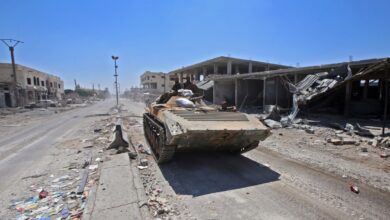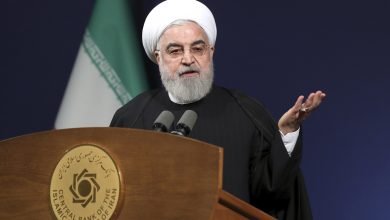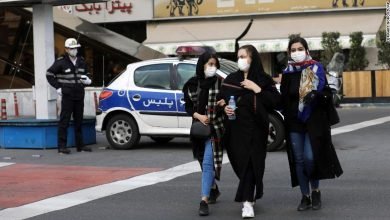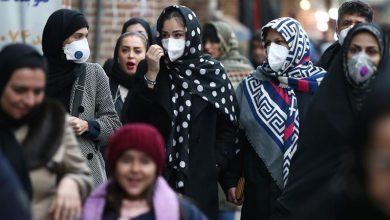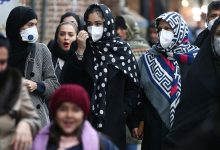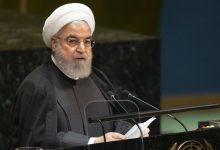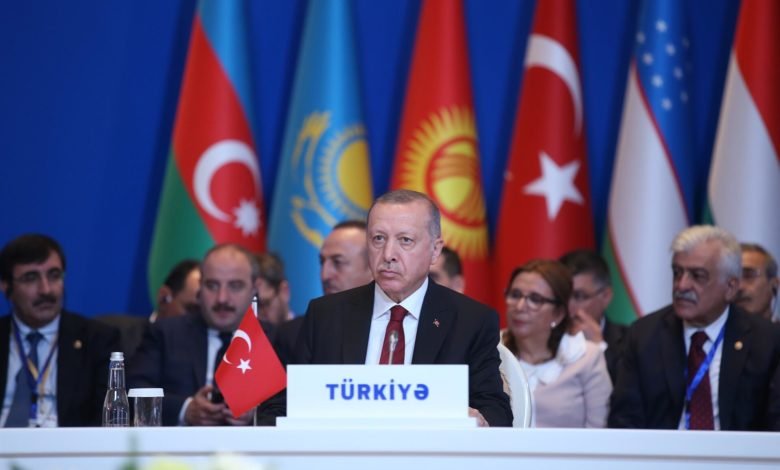
In the dusty suburbs of the Kyrghyz capital, Bishkek, hordes of shoppers are swarming over the wholesale market of Dordoy. To the outsider, this – the largest such market in Central Asia – may look like a chaotic maze of containers and shanties. Narrow alleys are hectic and bustling; access roads are clogged with traffic till late at night. It’s business as usual at this entrepot of Eurasian trade.
And wherever you peer in Dordoy, you will see boxes, sacks and bags emblazoned with “Made in Turkey.” Fur coats, leather boots, belts, gloves, socks, and more – all very attractively priced. Estimates are that 35% of products in Dordoy are Turkish.
Meanwhile, thousands of kilometers to the west – across steppes, deserts and mountains – lies the dazzling metropolis of Istanbul. Here, another kind of trade is underway.
In the colorful old Istanbul district of Laleli, almost all the local Turks are fluent in a Central Asian tongue or in Russian – the lingua franca of the ‘Stans – or both. Bright Russian shop signs advertising the very same fur-coats, shirts and foot-wear found in Dordoy lure Central Asian “shuttle traders.”
Thousands of Kyrghyz and Kazakh traders – leveraging visa-free sojourns in Turkey – pound the ancient, stone-paved streets of Laleli, stocking up on dirt-cheap Turkish goods, boxing them and wrapping them. Then it’s onto the bus and onto the cheap charter flight. Four hours in the air, a couple of hours on bumpy roads and the booty is un-boxed in Dordoy, where eager shoppers await.
This is Turkish-Central Asian trade in action, on the most basic level.
But Turks have much more to offer their Central Asian kin than cheap clothing. Industrial goods, aggressive investments, energy joint ventures, religious schools and soft power are all on the table.
All this at a time and in a place where Moscow continues to assert political influence across the ‘Stans, and Beijing is aggressively promoting its Belt and Road Initiative of Eurasian integration in the region. Amid these big-picture power games, Ankara, too, has a big-league, but little-known paradigm to promote. Turkey is seeking to assert leadership over one of the biggest, most widespread and potential-laden ethno-linguistic groups on earth: The Turkic peoples.
Ankara has been a rising player in Central Asia for almost three decades, but ethnic ties date back to antiquity. Over 1,000 ago, Turkic peoples inhabited the vast steppes of Central Asia, before settling the Anatolian plains of modern-day Turkey.
Today’s Turkey and Central Asia countries are a part of a vast community: The Turkic peoples, a collection of ethnic and linguistic groups extending from the Mediterranean to Siberia. The Turkic language family comprises over 30 languages, with a whopping 170 million native speakers of some kind of Turkic language.
Beyond Turkey itself, with 60 million Turks , there are five Turkic ‘Stans: Azerbaijan, Kazakhstan, Kyrgyzstan, Turkmenistan and Uzbekistan. Moreover, there are Turkic minorities as far afield as eastern Russia and western China.
The 19th century Ottoman Empire promoted the nationalistic concept of “Pan Turkism.” However, at that time, the waning Ottomans were unable to compete with the rising Russians, the dominant force in Central Asia. Ankara’s opportunity came after the collapse of the USSR in 1999.
Fast forward to the 21st century, and a newly confident and prosperous Turkey, the largest and the most powerful of Turkic nations, is spreading its influence, boosting its economic clout and seeking to asset leadership.
‘Turkic brothers’
In a region long dominated by Russia, where China is making deep inroads, Turkey is offering the ‘Stans an alternative – buttressed by official clout. And it’s got what that takes.
Turkey is the world’s 17th largest economy. While its highly confident President Recep Erdogan and his Justice and Development Party are launching high-profile power plays in the Middle East – where they have shown no fear of either Moscow or Washington – they are making quieter inroads into Central Asia.
Under decades of Soviet rule, Central Asia was aggressively Russified and secularized. Some of the region’s former leaders with Soviet pasts, including in Uzbekistan and Kazakhstan, never trusted Turkey completely. But that post-Soviet political generation is being replaced by a new breed of nationalist, pro-Turkic elite, like the new Uzbek President Shavkat Mirziyoyev. These are more likely to identify with Turkey – and that’s good news for Ankara.
According to Turkey’s Foreign Ministry website, Ankara was the first capital to recognize the independence of the Central Asian states. After early diplomatic contacts in the early 1990s, Ankara established a “High Level Strategic Cooperation Council” to promote its interests in the region.
Ankara’s main pillars of influence are trade, investment and soft power.
Post-USSR, Ankara spent millions of dollars on brand-building in the region. Turkish television channels and newspapers were launched. Scholarships were funded for Central Asians to study in Turkey. Turks promoted Central Asians as long-lost cousins; the new era was to be the grand reunion.
Central Asian leaders welcomed these overtures, and Turkish money flooded in. Statistics show how important for Central Asia Turkey and its investments have become.
Kazakhstan is Central Asia’s economic heavyweight. Out of roughly $50 billion of foreign investment there, some $2.4 billion originated in Turkey, with Turkish companies heavily involved in telecommunications and energy. Kazakh investments in Turkey – an unusual case for Central Asia – exceed $2 billion.
Among the flagship projects is a Black Sea oil refinery that the two countries are jointly working on. A southern pipeline to connect Turkmenistan and Azerbaijan to Turkey (across the Caspian) is now under construction, due for completion in 2021. Kazakhstan as a source of energy, and Turkmenistan as a transit conduit, are at the forefront of Turkey’s energy push into the region.
Meanwhile, Kazakh-Turkish trade has risen from approximately $236 million in 1995 to $3 billion in 2010.
Turkey is economically critical for Kyrgyzstan. Bilateral trade soared from a mere $43 million in 2005 to $160 million in 2010. Turkey is the fifth-largest foreign investor in Kyrgyzstan. The Turkish International Cooperation and Development Agency alone has implemented 51 projects in the country.
Turkey is by far the largest investor in Turkmenistan, and its second largest trade partner. As of 2013, more than 600 Turkish companies had implemented over 1270 investment projects, valued at $15 billion. Bilateral trade jumped from $168 million in 1995 to $1.5 billion in 2010.
Turkey is also a key partner of Uzbekistan. Bilateral trade grew from $200 million in 1995 to more than $1 billion in 2015. Turkish investments are visible everywhere.
In Tajikistan, Turkey faces competition from Iran, which is culturally and linguistically closer to the country. Even so, Turkey is still a Top 4 trade partner.
Soft power
It is not just economics. Ankara has created a huge network of organizations to cozy up to Central Asia.
It has pioneered a Turkic University Association and sponsored a common history textbook to bring local teachings in line with Ankara’s narrative.
The International Organization of Turkic Culture was established in 1993 to “protect Turkic culture, art, language and historical heritage.” It promotes scholarships for students in Central Asia and has opened numerous Turkish educational institutes in the region.
These include the Turkish-Kazakh International Hoca Ahmet Yesevi University in Kazakhstan, with 20,000 students – one of the leading universities in the country. There are also 28 Kazakh-Turkish high schools, one university and one primary school, plus a Turkish Language Teaching Center, in Almaty.
One of the most prestigious universities in Kyrgyzstan, Manas University, is Turkish-funded. Turkish high schools and language centers are highly visible everywhere in Bishkek – outnumbered only by Turkish-style kebab eateries and stalls.
The “Summits of Turkic Speaking Countries’ Heads of States,” held annually since 1992, has evolved into something much more powerful: The Turkic Council.
October 2009 was the milestone. Turkish and Central Asian leaders met in Azerbaijan and signed a treaty establishing the council. The secretariat, naturally, is in Istanbul. The 6th summit of the council was held in Kyrgyzstan last September. According to Halil Akıncı, the founding secretary-general, “The Turkic Council has become the first voluntary alliance of Turkic states in history.”
That’s quite a statement. The metrics of council members – a population of over 144 million people, a vast territory of over 4 million square kilometers, and a combined GDP of $1.13 trillion – indicate just how influential this “Turkic World” could very well become.
The World Turks Qurultai (“Gathering of Elders”) was launched by Ankara in 2017. This huge organization aims to bring together Turkic people “for cultural and spiritual integration.” It has even been joined by representatives of the remote Turkic republics in Russia’s Siberia, Yakutia and Tuva.
And Yunus Emre Cultural Institutes, which spread Turkish culture and language, plan to open more branches in Central Asia.
Tourism and media push
Turkey offers rare visa-free entry to all the republics – even impoverished Tajikistan and secluded Turkmenistan. Naturally, there’s huge tourist traffic: Millions of Central Asians visit Istanbul and the “Mediterranean Riviera” of Antalya. After all, Central Asians don’t have many choices for overseas vacation destinations.
Turkish Airlines, the national carrier, flies to all major Central Asian cities, and some minor ones. Turkish low-costers like Pegasus Airlines have joined the boom.
Culture and the media are also moving in. The push started in the 1990s with a Kyrghyz edition of the Turkish Zaman newspaper – at the time, one of the best and the most popular independent papers in Istanbul.
More papers and TV channels followed. They are still popular all over the region, although their audience has shrunk since the early “honeymoon” period. The private channels offer Turkish dramas, music videos, movies and news bulletins. Broadcasts are in both Turkish and local languages – although in Azerbaijan they are Turkish only; locals can easily understand without translation.
Raising hackles
But just as China is finding, incoming outsiders can generate resentment. In a region with a strong recent history of secularism, Ankara’s religious activities are sowing discord.
Many schools and educational centers that Ankara opened in the ‘Stans promote Islamic values – albeit the Turkish brand of Islam, which is more liberal than that rooted in the Middle East.
They are funded by two main bodies: Diyanet, Ankara’s Religious Affairs Directorate, and Süleymancı, a Turkish Sufi order. Reports allege connections with Turkish intelligence agencies. Under Erdogan these bodies have been empowered.
But local leaders, especially in Uzbekistan and Turkmenistan, are uneasy, suspecting schools and channels of spreading potentially destabilizing Islamic values in rural areas. Many institutions have been shut by Tashkent and Ashghabad. Süleymancılar’s activities promoting Turkish nationalism and Islamic proselytization have been banned. And in Uzbekistan, all Turkish TV programs have been taken off the air.
One under-reported issue is the many Islamic school graduates who have radicalized and moved to the Middle East. As many as 4,000 Central Asians have joined ISIS in Syria and Iraq.
‘Ethnic Turks’
Confusingly for outsiders, some Turkic Central Asians are ethnically Turkish, creating another point of contention.
There are currently over 100,000 ethnic Turks – persons who trace their heritage to Turkey proper – in Kazakhstan, and over 30,000 in Kyrghyzstan. Ankara alleges that these Turks face discrimination.
Turkey is also highly sensitive about the so-called “Meskhetian Turks,” who formerly inhabited the Meskheti region of Georgia, along the border with Turkey. Considered politically unreliable by Stalin in World War II, they were forcibly deported from their homeland to remote Central Asia.
The majority settled in Uzbekistan. In 1989, anti-Meskhetian riots broke out all over Uzbekistan over the minority’s higher living standards. Pogroms killed over 100, and injured over 1,000.
Over 90,000 of those Turks subsequently migrated from Uzbekistan to other parts of the former Soviet Union, mainly Russia. But smaller communities still exist.
Turkey is especially upset that Central Asian Turks are denied the right to register their ethnicity in legal documents. Hence, Ankara continues to raise uncomfortable questions about them with the ‘Stans’ leaders.
Ankara probably can’t replace Moscow or Beijing as Central Asia’s leading external player – at least, not in the near future. Moscow is deeply entrenched; Beijing has deep pockets.
But Ankara is focused on the long term and the vast potential of the “Turkic World.” How the dynamics of that grouping will mesh with or clash with Moscow’s “Russki Mir” (“Russian World”) paradigm and China’s Belt & Road ambitions remains to be seen.


